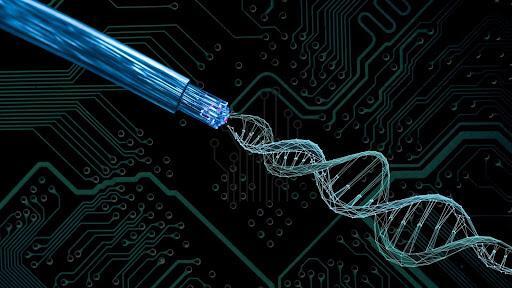
DNA’s Electron Flow May Unlock Future Biocompatible Electronics
In the quest for smaller, more efficient, and biocompatible devices, researchers have been exploring unconventional materials to revolutionize electronic applications. A recent breakthrough in understanding the electrical properties of DNA has brought us one step closer to achieving this goal. Scientists have discovered that interactions between electrons and molecular vibrations, or phonons, create novel pathways for electron transport within DNA strands. This groundbreaking insight highlights DNA’s potential as a building block for future electronics, paving the way for innovative devices that seamlessly integrate with living tissues.
The study, published in the journal Nature Communications, reveals that the movement of electrons within DNA is not solely dependent on the molecule’s chemical structure, but also on the dynamic interactions between electrons and phonons. This phenomenon, known as electron-phonon coupling, plays a crucial role in determining the electrical conductivity of DNA.
To better understand this process, researchers from the University of California, San Diego, and the University of California, Los Angeles, conducted an extensive study on the electrical properties of DNA. Using a combination of advanced experimental techniques, including scanning tunneling microscopy and spectroscopy, they explored the electron transport dynamics within DNA strands.
Their findings suggest that the interactions between electrons and phonons give rise to novel pathways for electron transport, allowing DNA to exhibit electrical conductivity. This property is particularly significant, as it enables DNA to potentially serve as a building block for future electronic devices.
So, what does this mean for the development of biocompatible electronics? The discovery of DNA’s electron flow has far-reaching implications for the creation of devices that can seamlessly integrate with living tissues. Traditional electronic materials, such as silicon and metals, are often incompatible with biological systems due to their harsh chemical properties and potential toxicity.
By leveraging DNA’s unique electron-vibration dynamics, researchers can develop novel electronic devices that mimic the properties of biological systems. For instance, DNA-based electronics could potentially be used to create sensors that can detect subtle changes in biological signals, such as those used in medical diagnostics.
Furthermore, the development of DNA-based electronics could also lead to the creation of implantable devices that can interact with the body’s natural electrical signals. This could revolutionize the field of neuroprosthetics, enabling individuals with neurological disorders to regain control over their movements and cognitive functions.
The potential applications of DNA-based electronics are vast and exciting. However, it is essential to acknowledge that the field is still in its early stages, and significant challenges lie ahead. To fully realize the potential of DNA-based electronics, researchers must continue to explore the intricacies of electron-phonon coupling and develop novel materials and fabrication techniques.
In conclusion, the discovery of DNA’s electron flow has opened up new avenues for the development of biocompatible electronics. By harnessing the unique properties of DNA, researchers can create innovative devices that seamlessly integrate with living tissues, paving the way for a new generation of electronic applications that are both efficient and biocompatible.
News Source:
https://researchmatters.in/news/researchers-study-how-electrons-move-dna-strands-electronic-applications






